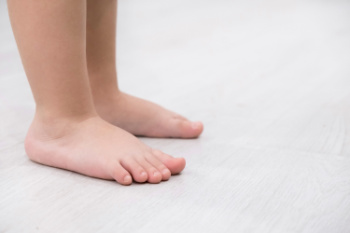
Flat feet, a common condition characterized by a lack of arch in the foot, can potentially affect the physical performance of school-age children. While flat feet themselves may not directly hinder a child's ability to engage in physical activities, they can contribute to issues such as foot pain, fatigue, and decreased stability. Children with flat feet may experience discomfort or cramping during prolonged periods of standing or walking, impacting their participation in sports or physical education classes. Furthermore, flat feet may alter the biomechanics of the lower limbs, leading to poor posture, balance problems, and an increased risk of injury. Addressing flat feet early on through proper footwear, orthotic inserts, and targeted exercises can help alleviate symptoms and improve physical performance in children. By recognizing the potential impact of flat feet on physical activity, parents and educators can take proactive steps to support the overall well-being and participation of school-age children in various physical pursuits. If your child has flat feet, it is suggested that a podiatrist is contacted who can offer effective relief and treatment methods.
Flatfoot is a condition many people suffer from. If you have flat feet, contact Luis Esquerdo Cruz, DPM from Dr. Esquerdo Podiatry and Laser Center
. Our doctor will treat your foot and ankle needs.
What Are Flat Feet?
Flatfoot is a condition in which the arch of the foot is depressed and the sole of the foot is almost completely in contact with the ground. About 20-30% of the population generally has flat feet because their arches never formed during growth.
Conditions & Problems:
Having flat feet makes it difficult to run or walk because of the stress placed on the ankles.
Alignment – The general alignment of your legs can be disrupted, because the ankles move inward which can cause major discomfort.
Knees – If you have complications with your knees, flat feet can be a contributor to arthritis in that area.
Symptoms
- Pain around the heel or arch area
- Trouble standing on the tip toe
- Swelling around the inside of the ankle
- Flat look to one or both feet
- Having your shoes feel uneven when worn
Treatment
If you are experiencing pain and stress on the foot you may weaken the posterior tibial tendon, which runs around the inside of the ankle.
If you have any questions please feel free to contact our office located in San Juan, PR . We offer the newest diagnostic and treatment technologies for all your foot and ankle needs.